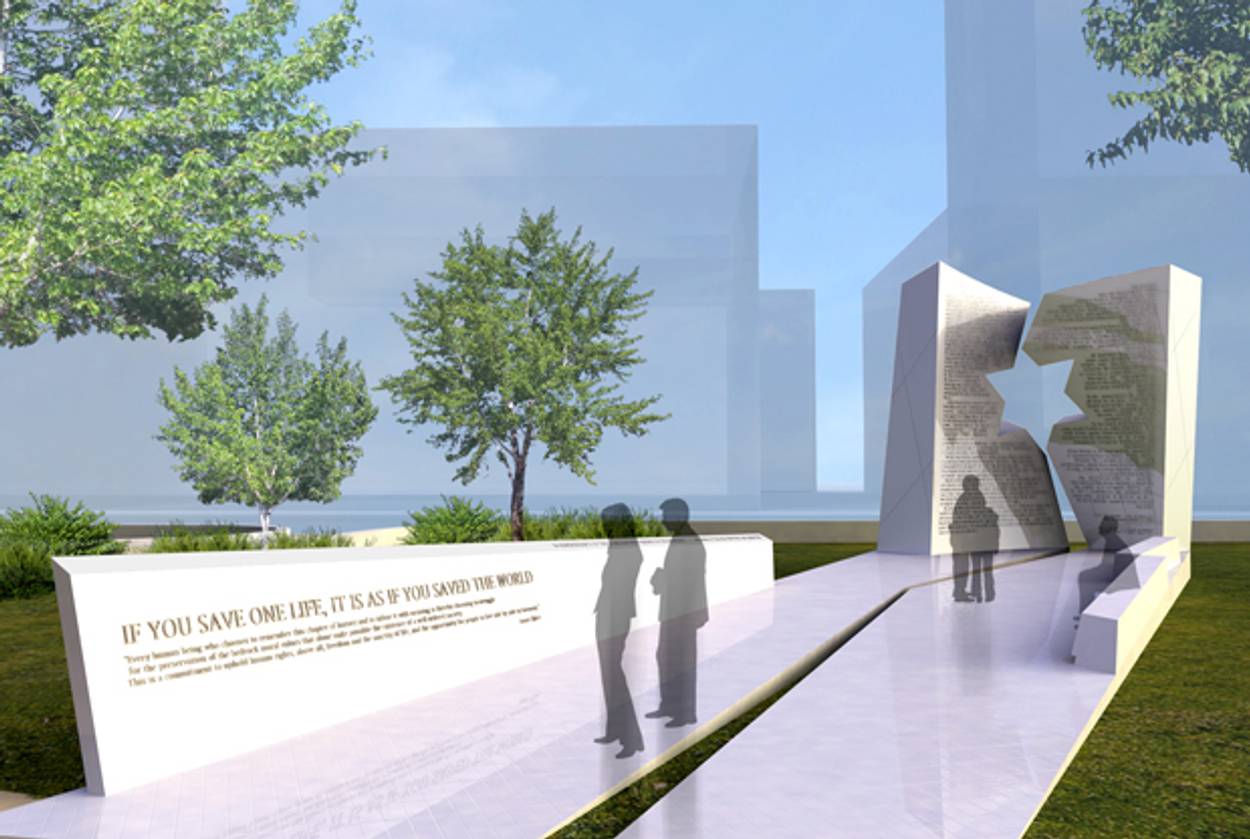Ohio Statehouse Holocaust Memorial Dedicated
Ending controversial debate over commemoration and government grounds




A Holocaust memorial at the Ohio Statehouse in Columbus designed by Daniel Libeskind was dedicated yesterday in an official ceremony that drew 1,500 attendees. It’s only the second Holocaust memorial to be built on state-owned land in the United States, and the dedication of the privately-funded monument marks the end of a controversial three-year process.
As Rebecca Meiser reported last year, it all began at the 31st annual Ohio Statehouse Holocaust Remembrance Event in May 2011, when a survivor’s account compelled Gov. John Kasich to stand and propose a Holocaust memorial on the statehouse grounds.
Meiser wrote:
Kasich’s decision to put a memorial in the statehouse was unprecedented: There are no Holocaust memorials at any other statehouse in the country. It was also technically illegal. In order for any kind of changes to be made to the Ohio statehouse grounds, it has to first pass through the Capitol Square Review and Advisory Board, which controls the house grounds. The last monument to be approved was a statue of William McKinley about 100 years ago.
Kasich found his most vocal opponent in former Republican Sen. Richard Finan, who immediately denounced the plan for bypassing the required regulations. Finan told Meiser it had nothing to do with the Jewish community—it was about the site itself. “I don’t think a Holocaust memorial fits with the historical markers,” he told Meiser. “The statehouse is a Greek Revival building … that has statues of Civil War generals on the grounds.”
Finan conveniently chaired the Capitol Square Review and Advisory Board, and refused to ease application guidelines for Kasich’s proposal. The governor and his team decided to bypass the committee, taking the vote to the state’s general assembly, which voted in support of the creation of the Ohio Statehouse Holocaust Memorial in March 2012.
But that wasn’t the end of the fight. In July 2013, Finan commissioned a crude mock-up of the design submitted by architect Daniel Libeskind that he had constructed on the statehouse grounds. (Libeskind’s submission, which featuring two angled 18-foot steel panels joined together by a cut-out Star of David—was ultimately selected for the memorial). Supporters of the monument balked at Finan’s structure, which was quickly taken down.
Now Libeskind’s design has been completed and the memorial has been dedicated, and everyone seems to be OK with it. The Cleveland Jewish News spoke to attendees at yesterday’s event, all of whom expressed support for the city’s newest monument:
Previous: Daniel Libeskind Design Mocked in Mock-Up
Related: Ohio’s Holocaust Memorial Fight
Stephanie Butnick is chief strategy officer of Tablet Magazine, co-founder of Tablet Studios, and a host of the Unorthodox podcast.